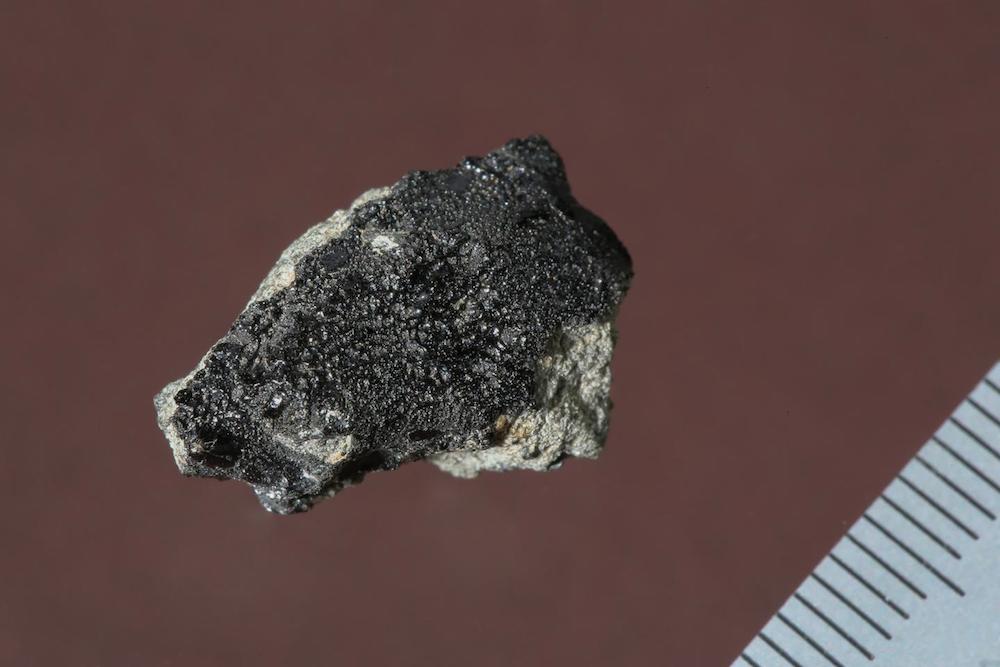Experts Cast Doubt on Meteorite Study's Claims of Martian Life

A debate has long raged among scientists over the possible existence of life on Mars, and a new study is adding fuel to the fire.
A recent analysis of the Tissint meteorite, which fell to Earth in 2011 over the Moroccan desert, led to a report of evidence that suggests that carbon-containing fluids — possibly made by life — once flowed on the Red Planet.
"The presence of organic-rich fluids that infiltrated rocks near the surface of Mars has significant implications for the study of Martian paleoenvironment and perhaps [for a] search for possible ancient biological activities on Mars," the researchers wrote in the study, which was made public on Tuesday (Dec. 2) in the journal Meteoritics & Planetary Science. [Space Rocks! Photos of Meteorites for Sale]
But some experts think the findings don't rule out the theory that the meteorite's organic material originated from nonliving processes.
As the famed astronomer Carl Sagan once said, "Extraordinary claims require extraordinary evidence," observed Andrew Steele, a microbiologist at the Carnegie Institution of Washington, in Washington, D.C., who has studied the meteorite but was not involved with the new study.
"I think the onus is on [the researchers] to provide that extraordinary evidence," Steele told Live Science. "I don’t think they have it at the moment."
Fireball from above
Sign up for the Live Science daily newsletter now
Get the world’s most fascinating discoveries delivered straight to your inbox.
The Tissint meteorite was carved out of Mars by an asteroid, and fell to Earth in a blazing fireball over the Moroccan desert's Tata Province in the early hours of the morning on July 18, 2011. One of only five Martian meteorites whose falls have been witnessed by people, Tissint was first studied by meteoriticist Hasnaa Chennaoui Aoudjehane of the Hassan II University in Casablanca.
Previous studies have found traces of organic material — carbon-containing compounds which, on Earth, are some of the building blocks of life — in tiny fissures in the Tissint meteorite, which formed while the rock was on Mars. But scientists have fiercely debated whether these compounds were produced by life or by other nonliving processes.
In the new study, Philippe Gillet, an earth and planetary scientist at the École Polytechnique Fédérale de Lausanne, in Switzerland, and a team of colleagues analyzed the chemistry of the organic carbon found in the meteorite's cracks.
Gillet's team believes that an earlier asteroid impact on Mars may have created these cracks in the Tissint rock while it was still on the Red Planet's surface, producing melt "veins" that absorbed some of the carbon-containing matter.
Carbon, like other elements, comes in different forms, called isotopes. By measuring the amounts of these isotopes, scientists can determine the likely origin of the carbon in the cracks.
After analyzing the composition of the carbon in the Tissint meteorite's cracks, the team found that the carbon isotopes were too light to have come from the Martian atmosphere, as some scientists had suggested. They concluded that the chemicals were brought there by fluid that was rich in organic matter that probably came from life, the researchers said.
But Steele and other scientists don't think the evidence proves this claim.
Life from Mars?
In a 2012 study published in the journal Science, Steele found the organic matter found in Tissint and 10 other meteorites did originate on Mars, but was formed by volcanic processes. However, Steele wasn't looking at the same organic material as Gillet and his team, who were studying compounds that entered the meteorite after the lava cooled.
Still, the organic matter from fluids could have come from a number of other sources, such as contamination on Earth, meteorites pummeling Mars or other nonlife chemistry, Steele said. Some of these sources could also produce light isotopes of carbon, he added.
Allan Treiman, a planetary scientist at the Lunar and Planetary Institute in Houston and senior scientist for NASA's Mars Science Laboratory, told Live Science in an email that "organic-bearing fluids are found in some [volcanic] rocks on Earth, and are interpreted as [not] having anything to do with life."
Tissint isn't the only meteorite that has sparked controversy over claims of Martian life. The Alan Hills 84001 meteorite, which was found in Antarctica on Dec. 27, 1984, is also thought to be from Mars. In 1996, scientists reported that the space rock contained evidence of fossilized bacteria, but others have since found explanations for the findings that do not require life.
Scientists still can't rule out the possibility that life could have existed on the Red Planet — after all, the chemical building blocks for life are there, Steele said. But researchers "have to be more robust in their analysis to actually prove those claims," he said.
Follow Tanya Lewis on Twitter. Follow us @livescience, Facebook & Google+. Original article on Live Science.











